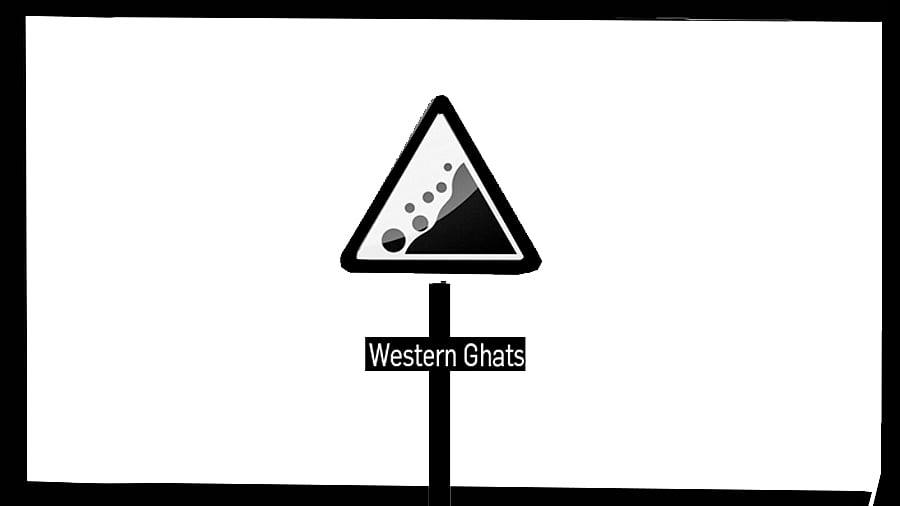
The devastating landslide in Wayanad on July 30 is yet another reminder that abundant caution and ample restraint are essential when using land and natural resources, especially in sensitive geographical zones. Lesser understood effects of global climate change are aggravating both anthropogenic and natural factors that disturb the ecological balance. As expected, the Wayanad disaster has revived discussions on various expert recommendations aimed at preserving this balance in the Western Ghats (WG).
Opinions have been diverse, ranging from criticisms of the government's delays in implementing these recommendations to scepticism about whether extreme technocratic regulation is a viable solution. People inhabiting the landscape play a central role in these narratives—often depicted either as victims of environmental tragedy driven by a greedy industrialist-politician-bureaucrat nexus or as those who stand to lose economic prosperity (or sustenance) from a restrictive environmental regime. It is fair to say that local communities are the biggest stakeholders in this vexed situation, yet their voices are often drowned out by both development and conservation interests.
The responsibility for balancing these competing interests lies with the government, as the custodian of the common good. Given the broad environmental footprint, unique ecological characteristics, and vast geographical expanse of the WG, the focus has shifted to the central government. It is in a difficult position, contending with not only the decades-old ‘sustainable development’ conundrum but also a jurisdictional overlap with six state governments.
Historically, state governments have been poor environmental regulators, and the argument is that the central government, as an additional checkpoint, provides a higher level of oversight and ensures that environmental standards are upheld. However, this oversight has often been inconsistent, influenced by political and economic compulsions.
Still, given that the central government has assumed broad regulatory powers under laws such as the Environmental Protection Act and commissioned the expert studies on WG, there is a legitimate expectation for the central government to address this issue. The government moved quickly after the disaster, releasing for public consultation—for the sixth time in 10 years—a draft notification to declare parts of the Western Ghats as an environmentally sensitive area (ESA), within which industrial and construction activities would be regulated. But was this response trigger-happy, more about optics, or does it lay a platform for meaningful action?
The broad aim of ESAs is to strike a balance between the imperatives of development and conservation in ecologically fragile landscapes but without the disruptive effect that protected conservation areas have on the economy and livelihoods. This illuminates two key parameters that an ESA should strive for: development that is at least environmentally sustainable but ideally synergistic, and development (or conservation) that is locally sensitive.
The proposed ESA falls short in comprehensively regulating activities that contribute to environmental precarity in the region. While quarrying and large construction projects, apart from thermal power plants and ‘red’ category industries, are restricted, thus tackling some key environmental concerns, the approach being proposed for the regulation of all other activities is “strict compliance with environmental regulations” and their assessment for “cumulative impacts and development needs." The implicit message that environmental regulations are not being complied with has not prompted the government to diagnose and remediate the weakness in monitoring and enforcement, which the notification attempts to wish away by adding some more monitoring responsibilities on the same bureaucratic machinery that has turned a blind-eye so far. The robustness of environmental baseline data, assessment of cumulative impacts, and inclusive valuation of costs and benefits are glaring gaps in the current environmental clearance process. However, in the absence of any incremental conditions or clarity on what these should entail, it is unlikely that the proposed requirements will spur change. If our existing regulations were not just paper tigers, specific restrictions such as this may not even be necessary. It is counterintuitive then that a special regulation for a particularly sensitive geography chooses to rely on the same set of actors and processes, albeit now with bells and whistles.
The proposed ESA also fails to bridge the gap between environmental protection and economic development, making it a soft target for the alarmist narrative of the ESA constricting economic and livelihood opportunities. Of course, there is some truth to this claim, which the government has neglected to address by not creating clear incentives for environmentally sustainable development practices. While the notification would not generally affect agricultural activities and small-scale industries, the potential of existing and future jobs and investments being impacted by restrictions on large projects calls for increased focus on viable alternative livelihoods. The government should have anticipated and alleviated this concern so that it is not misused for resistance.
A likely response to these criticisms that the specifics of regulation and the promotion of alternatives are outside the ESA notification’s scope and are to be considered under other laws and policies is tardy, coming more than a decade after the central government’s endorsement of the Kasturirangan report that is the basis of the current notification.
However, sustainable development in the Western Ghats does not have to be a zero-sum game. By opening the field to local democratic institutions and building the space and capacity for them to engage in decision-making and monitoring as a central actor and not just a distant stakeholder, there is hope for our regulatory mechanisms to be more alert, responsive, and downwardly accountable. The notification’s requirement of mandatory consent of gram sabhas under the Forest Rights Act for projects indicates positive intent, but must be coupled with action to organise these gram sabhas and recognise their community rights. Other local democratic institutions, such as biodiversity monitoring committees, village gram sabhas, and municipal wards, must also be revitalised and endowed with similar rights and powers.
(The writer is a policy analyst at the Ashoka Trust for Research in Ecology and the Environment)